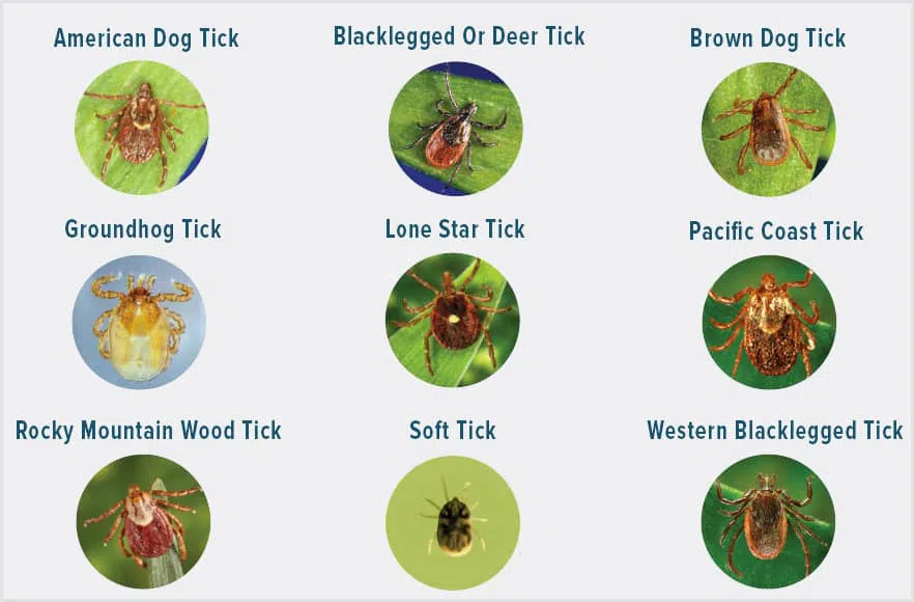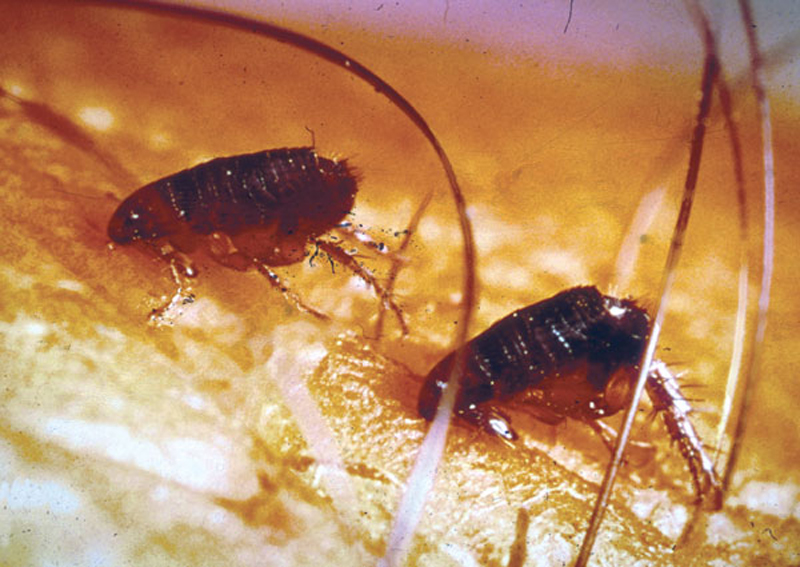Florida’s mild climate, with its warm temperatures, high humidity, and brief winters, often entices residents and visitors to spend more time outdoors. Sadly, these same conditions also benefit a variety of pests—chief among them, ticks. These small, blood-feeding parasites latch onto passing animals or humans, leading to itchy bites and potential disease transmission if left unaddressed. In elegant communities such as Coral Gables, promptly handling any signs of ticks is vital to preserving occupant comfort, protecting pets, and curbing potential health hazards. This service page clarifies why ticks thrive in Florida’s environment, how to detect early indicators of an emerging problem, and why enlisting a professional tick exterminator for tick treatments is your most reliable strategy. Acting quickly at the first hint of ticks spares you continued bites, occupant distress, and the worry of hidden ticks lurking on carpets or in yard foliage.
Why Ticks Thrive in Florida

- Year-Round Mild Temperatures
In cooler states, sub-freezing winters can halt tick breeding for months. Florida’s winter seldom stays cold enough to reduce tick populations meaningfully. Even minor cold fronts do not linger, letting ticks persist indoors or outdoors year-round. Air-conditioned or heated homes remain consistently warm, providing ticks further shelter if they manage to slip indoors. - High Humidity and Rainfall
Ticks require moisture, especially during their early life stages (eggs or nymphs). Florida’s frequent rain and naturally high humidity keep yard edges or leaf litter damp, fostering ideal conditions for ticks to hatch and wait for passing hosts. Even moderate rainfall ensures no severe dry spells hamper tick development. - Minimal Seasonal Dormancy
Ticks in colder climates slow or stop breeding during long winters, but southwestern Florida’s climate imposes no such forced pause. A handful of ticks can quietly balloon into a more substantial infestation if occupant vigilance or robust pest management is lacking. - Abundant Wildlife and Pets
From dogs or cats strolling yard corners to wildlife like raccoons or opossums crossing properties, Florida’s environment offers ticks many warm-blooded hosts. Pets unprotected by flea/tick preventatives can pick up ticks outdoors, then inadvertently deposit them on indoor carpets, pet bedding, or furniture. - Frequent Movement of Residents and Visitors
Coral Gables, with its proximity to Miami and strong cultural draws, sees occupant changes and tourist visits. Ticks can travel on clothing folds, secondhand furniture, or even in vehicles. A single unnoticed tick-laden item brought indoors can start a new cycle if occupant measures do not remove them.
Key Signs of a Tick Presence
- Pet Scratching or Biting Excessively
One of the earliest red flags is a dog or cat repeatedly grooming or scratching near ears, neck folds, or belly—common tick attachment sites. Owners may find embedded ticks, resembling small dark bumps if parted fur is checked closely. A veterinarian might point out scabs or bald patches if ticks feed long undetected. - Ticks on Floors or Walls
Certain tick species, such as the brown dog tick, can complete their entire life cycle inside a home if they find consistent warmth and hosts. Spotting small, dark bugs crawling slowly on baseboards, near pet resting spots, or along wall corners signals a potential infestation, requiring occupant or professional action to avoid escalation. - Human Tick Bites
While ticks favor animals, they bite humans if readily available. Tick bites are often small, red welts. Some species can pass pathogens if they remain attached long enough. Occupants noticing multiple unexplained bites on ankles or legs after yard work, or discovering attached ticks, should check lawns and interiors for further signs of these parasites. - Ticks in Yard Debris
Ticks frequently hide in tall grass, leaf piles, or shaded yard edges, waiting for passing hosts. Inspecting corners of the yard or lightly raking leaf litter might reveal adult ticks seeking a meal. Shaded, moist spots behind shrubs or fences often serve as natural tick hotspots if occupant yard upkeep lags. - Pets Avoiding Usual Spots
A pet may shun once-favored corners, lounge spots, or yard patches if fleas or ticks aggravate them there. Investigating these zones might confirm tick presence. Prompt occupant or professional measures—like clearing debris, applying tick repellents—halt expansions before they reach indoors.
Why Prompt Tick Treatments Are Crucial
- Potential for Disease Transmission
Certain ticks can carry pathogens that cause illnesses like ehrlichiosis, anaplasmosis, or, in occasional Florida instances, Lyme disease. While not every tick is infected, multiple bites raise the chance of pathogen transfer. Eliminating ticks early lowers such risks significantly. - Prolonged Pet Discomfort
Fleas can already torment animals, and ticks only add to that burden by latching for extended feeds, leaving irritations or possible disease behind. Heavy tick loads on a small pet can lead to anemia. Timely occupant or veterinarian care, plus thorough property treatment, spares animals ongoing distress. - Neighbor or Shared Space Spread
In multi-family complexes or closely spaced homes, ticks may move with wildlife or cross yard lines if occupant efforts remain partial. Coordinated occupant or building-wide checks hamper expansions that otherwise might move from yard to yard, creating community-wide problems. - Daily Worry for Occupants
The prospect of discovering ticks in carpets or fresh bites each morning heightens occupant stress. Comprehensive removal indoors and yard management bring families or tenants peace, letting them enjoy Florida’s warmer weather without fear of ticks hitching rides on clothing or pets.

Why a Professional Exterminator Makes a Difference
- Complete Indoor-Outdoor Survey
A tick exterminator inspects interior rooms, focusing on carpet edges, pet beds, or behind furniture, as well as yard boundaries—fence lines, shrubbery, damp corners—for tick harborage. Identifying which species is present (like brown dog ticks) and whether infiltration is mainly indoors or out helps shape the approach. - Tailored, Safe Treatments
Overusing generic sprays risks occupant health or beneficial insects while possibly missing concealed tick clusters. Professionals precisely place insect growth regulators, adulticides, or yard granules where ticks typically gather, ensuring maximum lethal contact and minimal occupant chemical exposure. - Pet Integration
Environmental tick treatments alone fail if occupant animals remain unprotected, carrying new ticks from yard outings. Exterminators urge occupant synergy with veterinarians—like using monthly flea/tick topicals or oral medications. Medicated pets kill ticks that try feeding on them. - Comprehensive Lifecycle Disruption
Ticks develop through egg, larva, nymph, adult stages. Missing dormant pupae or eggs can let re-infestations happen after adult ticks die. Professional solutions combine yard treatments, indoor sprays, insect growth regulators, and occupant vacuuming to destroy ticks at every stage thoroughly. - Follow-Up and Reassurance
Because tick eggs may hatch weeks later, occupant-based checks or scheduled re-inspections confirm no new wave emerges. If occupant sightings resume or fresh bites occur, targeted re-treatments finalize the process, guaranteeing occupant relief.
Common Methods Used by Tick Exterminators
- Vacuuming and Steam Indoors
Vacuuming lifts adult ticks, eggs, or nymphs from carpets, rugs, and pet bedding. Occupants should discard vacuum contents outside in sealed plastic immediately. Steam—delivering lethal heat—penetrates deeper into fabrics or furniture seams, exterminating ticks that surface sprays might miss. - Insect Growth Regulators (IGRs)
Applying IGRs inside or in shady yard corners disrupts immature ticks from reaching adulthood. Outdoors, larvicides eliminate eggs or newly hatched ticks before they find a host. Occupants typically must keep pets or children away until the product dries or time indicated by the exterminator. - Outdoor Residual Sprays
Ticks typically lurk in tall grass, leaf litter, or damp shrubbery, awaiting warm-blooded animals. Exterminators treat fence lines, yard perimeters, or shady corners with adulticidal sprays that kill ticks on contact. Ensuring grass is kept short and yard debris minimal complements these treatments. - Pet Collaboration
While exterminators target the environment, occupant synergy with a veterinarian ensures dogs or cats remain protected via monthly tick preventatives. If animals roam unprotected, new ticks can quickly re-establish indoors, undermining prior success. - Post-Treatment Monitoring
Tick pupae can remain dormant for extended periods. Occupant checks or additional professional visits help confirm no new adult ticks appear. If occupant sightings occur, further yard or indoor spot treatments address holdouts, finalizing thorough eradication.
Serving Coral Gables
Coral Gables, famed for its Mediterranean Revival architecture, upscale neighborhoods, and lush streetscapes, draws families and travelers who enjoy the local charm. Yet lawns, gardens, and scenic boulevards also hold damp corners or ornamental shrubs that harbor ticks if occupant yard maintenance falters. Pets exploring local parks or encountering local wildlife risk picking up ticks that slip indoors. By combining occupant-based yard care—like trimming shrubs, removing leaf litter, or disposing of yard waste—and consistent use of monthly pet preventatives, property owners drastically reduce tick presence. Professional tick extermination ensures any established infestations indoors or out vanish quickly, restoring occupant comfort and safeguarding the refined image of Coral Gables properties.

Why Our Tick Treatments Excel
- Florida-Optimized Solutions
Because southwestern Florida seldom experiences tick-killing freeze spells, we integrate occupant yard vigilance—clearing brush, short mowing, ensuring dryness—with carefully placed adulticidal or larvicidal sprays. This synergy tackles ticks across all life stages, from egg to adult. - Precision for Occupant and Pet Safety
Rather than indiscriminate spraying, we home in on corners, pet bedding, or yard edges where ticks cluster. Occupants typically wait for dryness or recommended re-entry times, ensuring minimal chemical contact while ticks face lethal coverage. - Pet-Centric Coordination
We emphasize occupant cooperation with a veterinarian so pets remain protected by monthly tick solutions—topicals, collars, or chewables. This unity of environmental control and pet defense starves ticks of hosts, ending the cycle swiftly. - Follow-Up Verification
Because tick eggs can hatch weeks post-treatment, occupant checks confirm no new wave emerges. If occupant sightings persist or new bites occur, supplemental yard or indoor spot treatments finalize success, letting families or staff relax free from repeated itching concerns.
Call to Action
Seeing your dog persistently scratching, finding ticks along baseboards, or noticing red bites around your ankles after yard chores? Contact us to learn more or schedule your service. Our tick exterminator strategies in Coral Gables address ticks at all stages—eggs, nymphs, pupae, adult—both indoors and outdoors, eliminating them thoroughly to restore occupant peace and pet comfort. By acting quickly, you avoid further bites, occupant anxieties, and the potential diseases these parasites can transmit.
Sustaining a Tick-Free Environment
- Frequent Vacuuming: Weekly vacuum carpets, rugs, and pet bedding to remove stray eggs or adult ticks. Seal vacuum contents in plastic outdoors.
- Wash Pet Linens: Launder pet blankets or crate pads on hot cycles weekly. Drying on high heat kills ticks or eggs that survive washing.
- Use Pet Preventatives: Dogs and cats should remain on monthly flea/tick medications recommended by a veterinarian. Medicated animals kill ticks attempting to feed, halting future infestations.
- Trim Yards and Remove Debris: Mow grass short, gather leaf piles, and reduce moist corners. Ticks prefer cool, shaded spots. Minimizing yard clutter also curbs wildlife that might drop ticks.
- Post-Walk or Yard Checks: After yard activities, examine clothing or pet fur for ticks. Quick removal of attached ticks lowers bite durations and possible disease transmission.
With occupant vigilance and robust extermination, southwestern Florida property owners maintain a place free from these parasitic pests, letting them enjoy sun-soaked lawns, scenic boulevards, or restful interiors without fear of hidden ticks. Even with Florida’s mild winter fostering nearly year-round breeding, consistent environmental management—like yard dryness, occupant housekeeping, and veterinarian-supported pet care—prevents ticks from regaining any foothold, ensuring Coral Gables residents can relish the city’s elegance tick-free.
